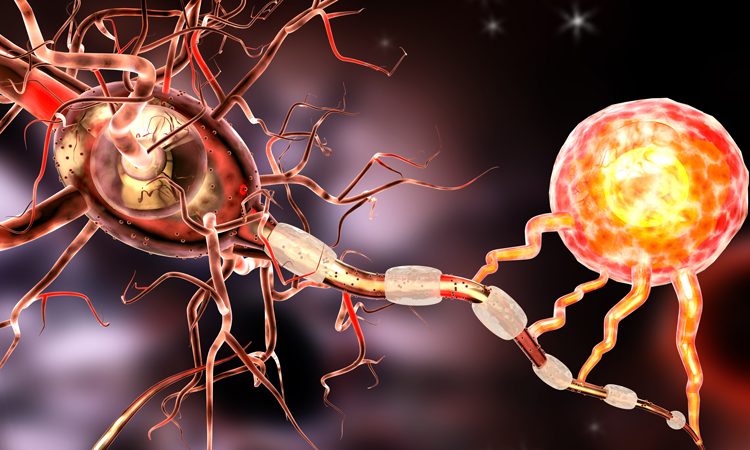Compound promotes healing of myelin in nervous system disorders
Posted: 6 September 2019 | Rachael Harper (Drug Target Review) | 2 comments
A compound that promotes the rebuilding of the protective sheath around nerve cells damaged in multiple sclerosis has been developed.


Scientists have developed a compound that promotes the rebuilding of the protective sheath around nerve cells that is damaged in conditions such as multiple sclerosis.
A previous study, led by Larry Sherman, PhD, a professor from Oregon Health & Science University (OHSU), discovered that a molecule called hyaluronic acid (HA), accumulates in the brains of patients with MS. This was further linked to the accumulation of HA to the failure of cells called oligodendrocytes to mature. Oligodendrocytes generate myelin. Myelin, in turn, forms a protective sheath covering each nerve cell’s axon.
Damage to myelin is associated with MS, stroke, brain injuries and certain forms of dementia such as Alzheimer’s disease. Delay in myelination can also affect infants born prematurely, leading to brain damage or cerebral palsy.
Subsequent studies showed that HA is broken down into small fragments in multiple sclerosis lesions by enzymes called hyaluronidases. In collaboration with Stephen Back, MD, PhD, a professor of pediatrics in the OHSU School of Medicine, Sherman discovered that the fragments of HA generated by hyaluronidases send a signal to immature oligodendrocytes not to turn on their myelin genes. This led researchers to explore how they might block hyaluronidase activity and promote remyelination.
Damage to myelin is associated with MS, stroke, brain injuries and certain forms of dementia such as Alzheimer’s disease”
A team of researchers led by OHSU has been working to develop a compound that neutralises the hyaluronidase in the brains of patients with MS and other neurodegenerative diseases, thereby reviving the ability of progenitor cells to mature into myelin-producing oligodendrocytes.
The latest study published describes a modified flavonoid – a class of chemicals found in fruits and vegetables – that does just that.
The compound, called S3, reverses the effect of HA in constraining the growth of oligodendrocytes and promotes functional remyelination in mice.
“It’s not only showing that the myelin is coming back, but it’s causing the axons to fire at a much higher speed,” Sherman said. “That’s exactly what you want functionally.”
The study was published in the journal Glia.
Related topics
Cell culture, Drug Targets, Enzymes, Hit-to-Lead, Research & Development
Related conditions
Alzheimer’s disease, cerebral palsy, Multiple Sclerosis (MS)
Related organisations
Oregon Health & Science University (OHSU)
Related people
Larry Sherman PhD, Stephen Back MD PhD



So happy for this news! I have multiple sclerosis and would love to be one of the people to try this!
Me to!